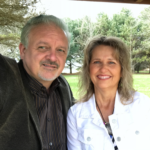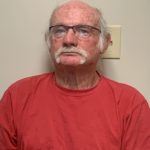Meet Our Elected Officials
Michael Kuipers
President

Michael Kuipers
I was the assistant fire chief for the Shadeland Fire Department for 25 years and am currently the president of the Shadeland Town Board.
Timothy Balensiefer
First Vice President

Timothy Balensiefer
Robert E. Morrison, Jr.
Second Vice President

Robert E. Morrison, Jr.
He earned his Masters of Science in Management from Indiana Wesleyan University along with his BSBA from Indiana Wesleyan University. He retired in 2015 as Project Manager from Caterpillar after 32 years. He served as a Pastor at Maple Grove Community Church in Kokomo from 2015-2019. He also is an Adjunct Facilitator at Ivy Tech College since 2015.
Bob enjoys spending time with family, especially his 7 grandchildren coaching and watching their sports and other school activities. He also enjoys playing senior softball with friends in West Lafayette, biking, golfing with buddies, reading, and Bible studies.
David Downey
Member

David Downey
David was president of the IN Street Commissioner’s Association four times. He earned road builder and master road builder certifications from INDOT’s Purdue run LTAP – the program for the advancement of highway challenges.
David Vanderkleed
Member
Josh Shives
Member

Josh Shives
Besides serving on the Shadeland Town Council, Area Plan Commission, and Parks Committee, Josh also actively sits on the Greater Lafayette United Way Community Investment Committee and Campaign Cabinet. He is a current member of the National Associations of Realtors and currently owns and operates a full service real estate brokerage.
Josh is an entrepreneur at heart and pours himself into many small businesses. When not working or serving the community, you’ll see Josh’s true passion, spending time with his wife and kids. He considers himself beyond blessed to be married to love of his life, Cassie Shives. Josh & Cassie have 3 beautiful children who are their everything. Josh believes there’s no better sound in this world than his children’s laughter.
Pamela (Pam) Luenz
Member

Pamela (Pam) Luenz
Starting a teaching career early by teaching piano while a high school and college student, Pam earned a B.A. in Elementary Education and a M.S. in Special Education from Bradley University in Peoria, Illinois.
Among the awards earned during teaching for 23 years, Pam received a Sagamore of the Wabash, the “Marquis Who’s Who Albert Nelson Lifetime Achievement Award,” Indiana Master Naturalist and was a graduate of Class #1 Leadership Lafayette.
Pam served on the Shadeland Planning Committee from 1999-2020. Currently, Pam volunteers at the Battle Ground nature center and also at Delphi’s Canal Pioneer Village (in period costume.) She serves on the Shadeland Fire Department and TIF committees.
Meet Our Clerk-Treasurer
Charlene Brown
Clerk-Treasurer

Charlene Brown
I bring a background in auditing municipalities and subsequently a consultant for municipalities to the Clerk-Treasurer position. Having these backgrounds provides a unique set of skills to the position, and I am glad to be doing my part for our Town of Shadeland.
I also love crafting and am enjoying meeting others who share the love of crafting.
A History of Shadeland
The Quiatenon (Wea) tribes of the Miami branch of the Algonquin family of Native Americans are recorded as far back as 1702 to have lived, hunted and freely roamed the forests and plains of the Wabash River and Wea Creek.
In May of 1791 Brigadier General Charles Scott was ordered by Secretary of War General Knox to destroy the Indian population around the Wabash River, particularly near the French trading post known as Fort Quiatenon. On June 1, 1791, Scott was able to spot the Quiatenon from a high point known as Round Top, an area south of the river where there was a gap in the timber. (That bluff is now known as High Gap along Town Road 375 West.) After destroying as many Natives as he could find, Scott burned their crops and homes, thereby assuming any Indian left alive would leave the area.
Later in that year, Brigadier General Wilkerson proceeded to the area that General Scott had destroyed only to find the crops replanted and well established. This time 430 acres of crops and the entire village were burned, and the General returned to Washington again assuming this would stop the Quiatenons from fighting. Many Native Americans were relocated out of Indiana after the War of 1812, most during the infamous “Trail of Tears” marches of the 1830’s…
Joseph Hawkins and William Jones platted the area in the spring of 1824, prior to the formation of Tippecanoe County in 1826. They planted crops and built cabins, brought their families later that fall, and later erected a much-needed gristmill on the Wea Creek.
William Taylor brought his wife and eleven children from Virginia in 1828, and settled on purchased government land with plenty of timber. The wooded land reminded him of his eastern home, and he named the area Shadeland. After clearing the land and establishing good crops and some cattle, he began making bricks for his magnificent home, which still stands today at the corner of Town Roads 550 South and 150 West. His grandson, Bennett, built a grain elevator in 1901 known as Taylor Station on the line of the Louisville, New Albany, and Chicago Railroad. The elevator stayed in operation until 1975. Though parts of it were bulldozed in May of 1975, some of the station is still standing in ruins.
James and Suzanna Hawkins, one of the area’s original Quaker families, built Shadeland Farms along the rich land between the Wea Creek and the Wabash River. They became famous for their cattle, and the site is still a local landmark, as is Taylor Station. The Hawkins’s were strong advocates against slavery, aiding in the Underground Railroad, as did all of the Society of Friends.
The first subscription school, which was later known as the Farmers Institute, was built in 1826 along the banks of Flint Creek. Five Quaker families, Joseph and Jane Hawkins, William and Mary Hollingsworth, with their brothers and sisters, settled the area, each acquiring 1,000 acres. They founded the Society of Friends and erected the area’s first church in 1827. Several schools, meeting houses and churches were built in Shadeland, Unionville and in the rural areas throughout the 1800’s, some of which are still used today., When Shadeland High School was opened in 1911, the Shadeland Farm School No. 1 and the Farmers Institute were closed down.
Union Township was formed in 1871 from portions of Fairfield, Randolph and Wayne Townships. The people of Union Township, mostly coming from strong agricultural backgrounds, had a reputation for being friendly and ready to help their neighbor. The Southern Pike, also known as the Lafayette-Attica Pike, roughly followed a pioneer trail, some of which is still visible. The road became State Road 25. Some small settlements and locally known areas, such as Wea Station, a siding along the Wabash Railroad and the fertile farmland in the central township know as Wea Plains, now exist in name only.
In recent history (1951), Indianapolis-based Eli Lilly & Company selected 400 acres between the Wea Creek and the Wabash River in Union Township to build their pharmaceutical laboratories. Today they are the town’s major employer and civic contributor.
In 1961 the Union Township Volunteer Fire Department was established. (See Shadeland Fire Department web page.
In 1975, the old Shadeland High School became one of Tippecanoe County’s recreational centers after McCutcheon High School was opened, as the county consolidated its schools. On the verge of demolition in 1984, the building was turned over to the Union Township Recreation Board.
(Note – Effective January 1, 2000, Union Township turned over ownership of the recreation center to the Town of Shadeland, and was renamed Shadeland Community Center. See Parks and Recreation web page.)
On August 20, 1984, the Tippecanoe County Commissioners voted 2 to 1 to incorporate Union Township, to be known as the Town of Shadeland. To quote Robert McKee, county assessor and long-time resident of Shadeland, “The people want home rule. They want to determine their future.” (Note – as of December 31, 2002 Bob retired as Tippecanoe County Assessor, and was elected Union Township Trustee/Assessor, a position he held prior to being elected County Assessor.)
Residents had protested paying the Lafayette City bus tax, since the buses did not run in Shadeland. They felt they had been skipped over too many times when it came to deciding which roads to pave. Having certain areas annexed into Lafayette and/or being rezoned for development may have also been factors in the decision to incorporate. On November 5, 1984, an all volunteer (Republican) Town Board and Clerk-Treasurer were elected. After creating a rural incorporated area whose initiation required unique discussions in the statehouse for approval, on January 1, 1985, Shadeland became one of the largest towns in Indiana in terms of square miles.
In July of 2000 the Town purchased land with building on the southeast corner of SR 25 and Town Road 250 West. The building was remodeled, and lot was improved for the use of the town road department. This building was named the “Shadeland Annex”, and as of January 1, 2003, is also the location of the Union Township Trustee’s office. The area on the south side of the building is used as a “practice” soccer field (see Parks and Recreation web page).
On October 10, 2000, at the Shadeland Annex a dedication ceremony was held for a new emergency warning siren, donated by Eli Lilly Tippecanoe Labs.
Today, the 1,757 citizens (2020 census) of Shadeland are proud of the town’s progress in holding down taxes with 100% of its roads improved and paved. We have still been able to maintain a rural community while keeping a reputation as being a friendly town.
Download Ordinances, Resolutions, and Minutes
Ordinances
Resolutions
2024-04 Slum and Blighted Area
2024-03 Multi-Hazard Mitigation Plan
2024-02 Transfer Appropriations
2023-04 Opposition to Water Transfer
2023-03 – CCMG Matching transfer
2023-02 Transfer of 2022 Appropriations 2023-03 – CCMG Matching transfer
2023-01 Approving Evonik Personal and Real Property Abatements
2023-02 Transfer of 2022 Appropriations
2022-01 Resolution to transfer appropriations
2022-03 Resolution Approving RDC Bonds
2022-04 Resolution for INDOT Signatory
2022_06 Update Hazard Mitigation
2022_07 Fire Equipment Disposal
2022_07 Fire Equipment Disposal
Meeting Minutes
03_12_2024 Council minutes
02_13_2024 Council minutes
01_09_2024 Council Minutes
12_12_2023 Council Minutes
11_14_2023 Council Minutes
10_10_2023 Council Meeting
09_12_2023 Council Minutes
08_08_2023 Council minutes
07_17_2023 Council minutes
07_11_2023 Council minutes
03_14_2023 APC and Town Council
06_07_22 Town Council 2023 Budget
